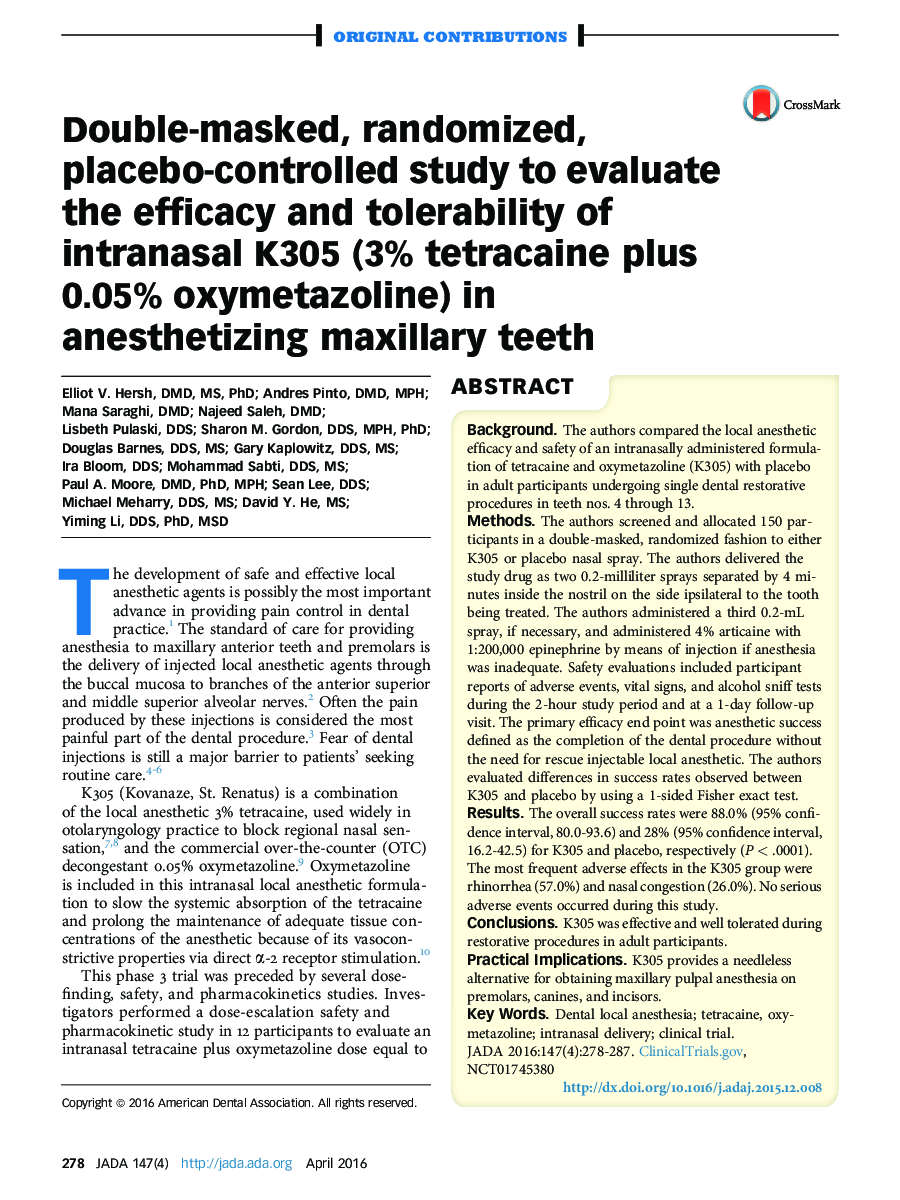| Article ID | Journal | Published Year | Pages | File Type |
|---|---|---|---|---|
| 3136362 | The Journal of the American Dental Association | 2016 | 10 Pages |
BackgroundThe authors compared the local anesthetic efficacy and safety of an intranasally administered formulation of tetracaine and oxymetazoline (K305) with placebo in adult participants undergoing single dental restorative procedures in teeth nos. 4 through 13.MethodsThe authors screened and allocated 150 participants in a double-masked, randomized fashion to either K305 or placebo nasal spray. The authors delivered the study drug as two 0.2-milliliter sprays separated by 4 minutes inside the nostril on the side ipsilateral to the tooth being treated. The authors administered a third 0.2-mL spray, if necessary, and administered 4% articaine with 1:200,000 epinephrine by means of injection if anesthesia was inadequate. Safety evaluations included participant reports of adverse events, vital signs, and alcohol sniff tests during the 2-hour study period and at a 1-day follow-up visit. The primary efficacy end point was anesthetic success defined as the completion of the dental procedure without the need for rescue injectable local anesthetic. The authors evaluated differences in success rates observed between K305 and placebo by using a 1-sided Fisher exact test.ResultsThe overall success rates were 88.0% (95% confidence interval, 80.0-93.6) and 28% (95% confidence interval, 16.2-42.5) for K305 and placebo, respectively (P < .0001). The most frequent adverse effects in the K305 group were rhinorrhea (57.0%) and nasal congestion (26.0%). No serious adverse events occurred during this study.ConclusionsK305 was effective and well tolerated during restorative procedures in adult participants.Practical ImplicationsK305 provides a needleless alternative for obtaining maxillary pulpal anesthesia on premolars, canines, and incisors.
